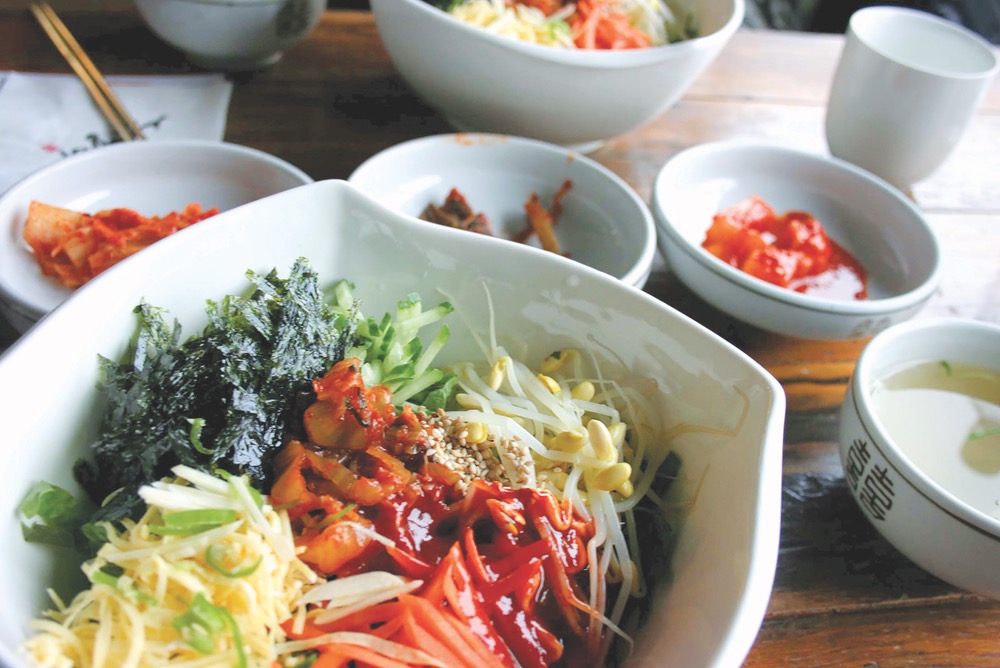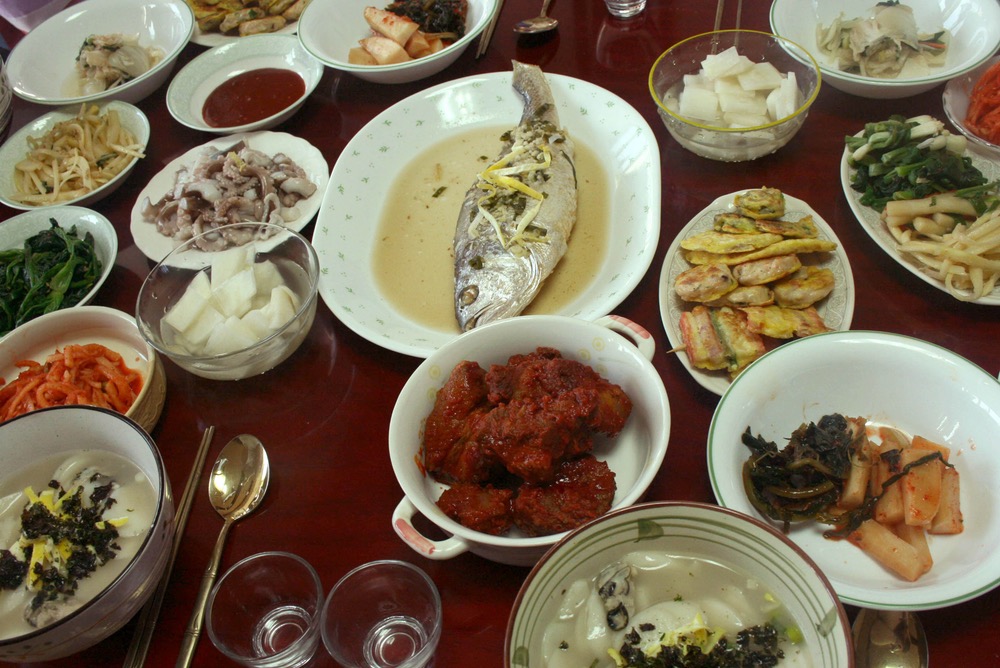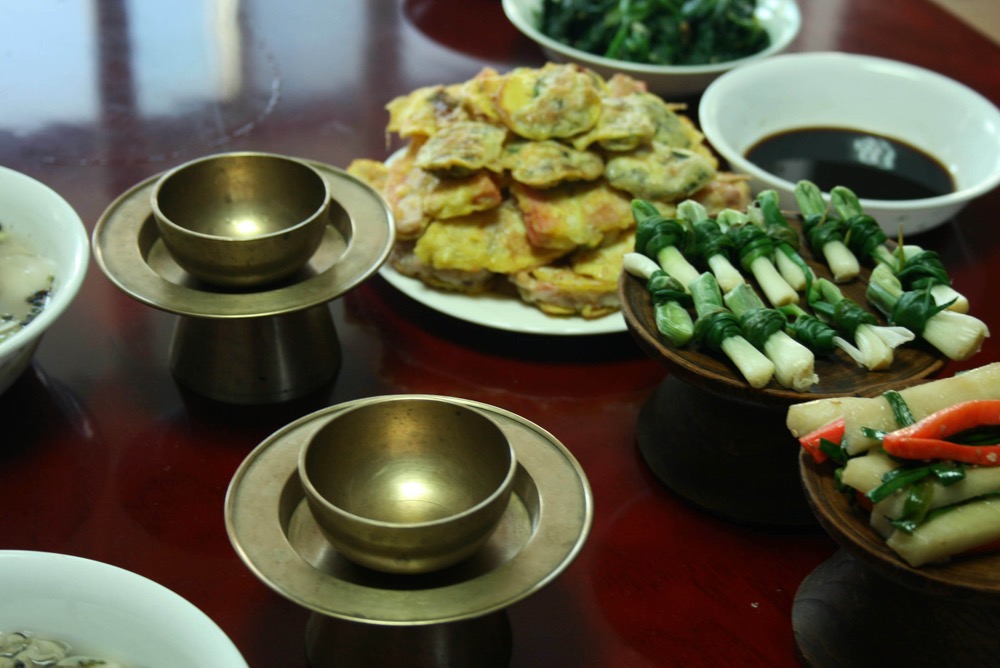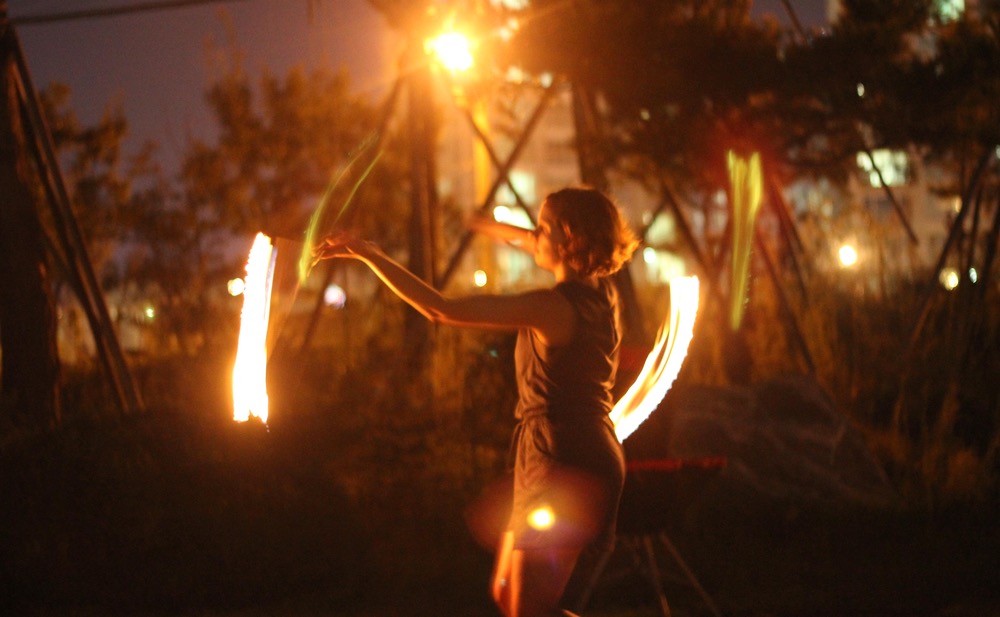
vie-magazine-korea
Kimchi and Common Ground
Story and photography by Mandy Yourick
Here I stand, waiting to purchase the box of raisins and underripe bananas clutched in my arms. The air is layered with smells—particularly fermented cabbage and red chili paste, which in the coming weeks is later identified to me as kimchi. My wallet is poised, ready for my transaction, and I glance again and again at the unfamiliar, brightly colored bills now lining its interior. The cashier asks something of the customer ahead of me. He replies quickly and with a smirk, and they laugh together. I notice that the cashier lightly rests her left hand on her right inner elbow as she gives the man his change and receipt. He takes them using both hands. The guidebook mentioned this in the customs section that I have now read nearly ten times. I wait, allowing the customer to collect his groceries before I stride forward.
Then, just as my first purchase is about to take place, a healthy woman somewhere between the ages of fifty and eighty begins unloading her basket of onions onto the grocery belt. They tumble noisily onto the scale, and I wonder if she saw me standing in line. Perhaps not, though as I am the only person with wavy brunette hair and blue eyes in a grocery store the size of a three-car garage, she must have. It’s okay, I tell myself. She’s your elder; you’re the visitor. This is her turf. She unhurriedly pays for her five pounds of onions and moves on. Another quick glance at the crisp, colorful bills in my wallet, and I’m ready.
Then a man appears, struggling with a large sack of rice while gently tugging his small son away from the glossy magazines. The cashier distracts the little one as the man hoists the rice onto the grocery belt. His exchange begins. Seriously! What is it now? My patience evaporates. Another wave of jet-lag fatigue hits. My frustration rises. I consider returning the raisins and bananas to their shelves and walking out. Then, at last, it occurs to me:
I’m not in line!

View from the top of Dobongsan mountain near Seoul.
South Korea is roughly two-thirds the size of Florida, with a population of fifty million. Needless to say, space is limited. Things—cars, restaurant booths, pencils, cups, chairs, camping gear, shoes, serving sizes, bus seats—are noticeably smaller than in the vast United States. At times, people reach over each other to grab an apple of their choosing or sit shoulder to shoulder with a complete stranger on a two-hour bus ride to Seoul. As I learned, they also stand much closer to one another in line. In the U.S., we might equate this closeness with an invasion of personal space—something rude, something to be avoided. In South Korea, this closeness comes with a prevailing sense that everyone is family. Koreans tend to address people they don’t know with familial titles, such as uncle, aunt, or little sister, rather than the ma’am, miss, and sir that are used here. This provides an additional, nearly unified sense of social responsibility. If a child is seen acting inappropriately, any adult can—and will—chastise the child, and, even better, the child will listen. An unblemished character is a treasured possession, making the crime rate extremely low in Korea. Pickpockets are truly rare. Forgotten valuables are often returned to their owners. You or a ten-year-old can safely walk home alone at night.
This barely scratches the surface of the lessons I learned during my fourteen months living and teaching English in South Korea.
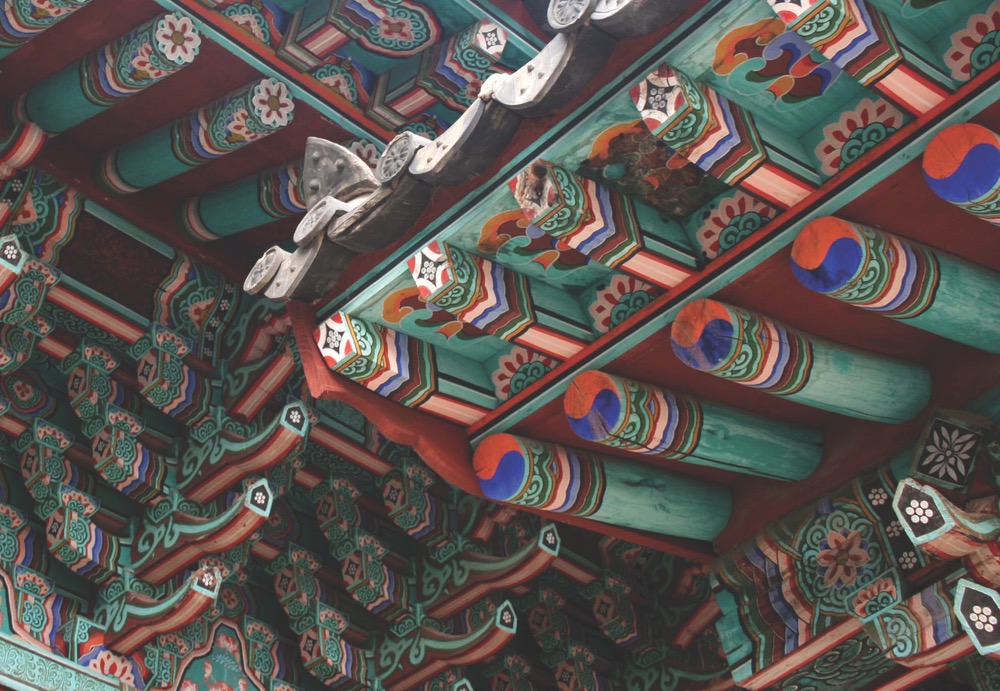
Classic temple architecture and adornments
Cultural isolation is a strange and beautiful creature, one that feeds on all of your perspectives, opinions, judgments, and, most of all, assumptions—particularly the ones you didn’t know you held. Day after day, this exchange takes place, and day after day—in many small and sometimes big ways—you’re stripped of what you “knew” and placed, wordless, at the threshold of understanding.
The elderly woman holding a napkin in the air is not staring at you with suspicious eyes because she thinks that you’re an ambassador of all things Western. No, silly, you have snow in your hair and she thought it was bird droppings.
The group of giggling teenage girls that are flocking closer and closer to your table are not gathering to sneer at your misuse of chopsticks, but because they genuinely want to know what you think about kimchi (the ubiquitous dish made from fermented cabbage and chili paste), toe socks, and Lady Gaga.
The taxi driver who laughs boisterously at your American citizenship later asks shyly if you and President Obama are buddies because, according to him, “He’s a numba one!”
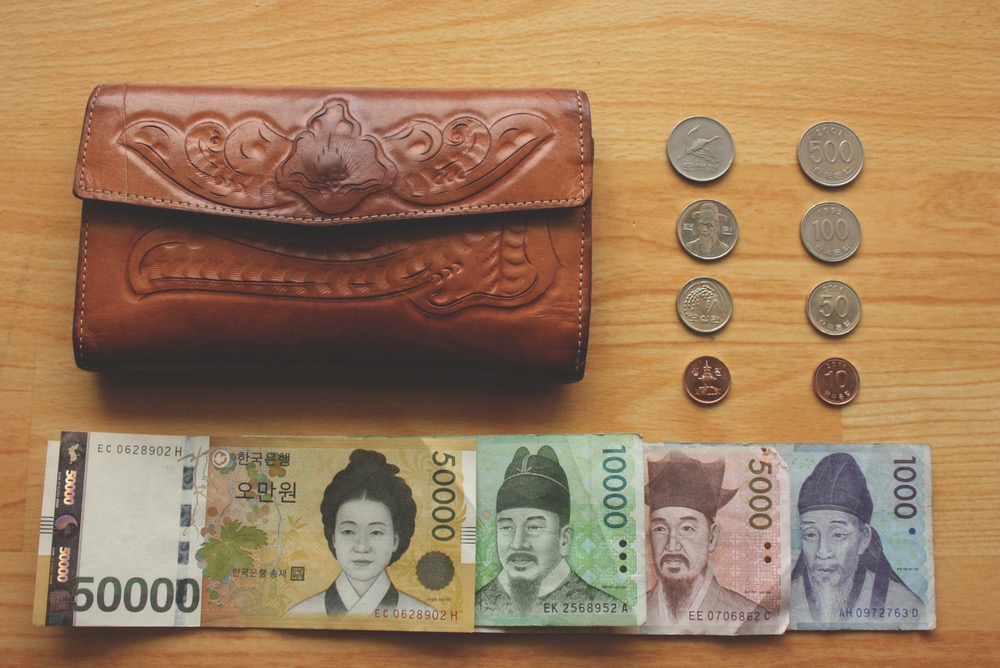
Korean currency.
There were also a number of things I didn’t know about food. Street-stall food will save your life more often than it will threaten it. You can, in fact, successfully eat noodles with round metal chopsticks and a spoon. You won’t fall ill just because you share a pot of soup with your entire dining party. Kimchi is like wine: better with age. Boiled silkworm and squid jerky do actually make good bar food. As my boss, Mr. Choi, would say, you should “drink the warm” when you have a sore throat, headache, hangover, or hangnail. All tea comes from the same tree. You can use it to make ice cream that will be both a lovely shade of green and delicious. True rice cakes are not a light, crispy snack: they are cylindrical, chewy, and very spicy. Coincidentally, they tend to be great for absorbing rice-based alcohol.
Koreans are also extremely proud to be themselves—that is, to be Korean. When holidays rolled around, our young students would proudly tell us which days they would have off from school and why. In our fractured English–Korean conversations, they told me of epic battles waged two hundred years ago, or that it was time to make sweet rice cakes with their grandparents, or, the best yet, that it was Children’s Day, a time to celebrate everyone’s youth. What struck me most was that these children genuinely knew the history and reasoning behind their holidays beyond what they gleaned from decorations or commercials. They also knew and fiercely supported Koreans with great accomplishments. One humbling Wednesday, I thought I’d impress them with a lesson about the first Korean in space, a woman. Fired up with feminism and equality, I embarked on my lesson only to find out that at the ripe old age of eight my students knew far more about Yi So-Yeon than I did. Also, nearly every Korean owns a Cleveland Indians hat (but I suspect the sales will shift to Cincinnati Reds caps now that Shin-Soo Choo has been traded).
- Bibimbap, one of Korea’s national dishes
Yes, my huge impetus for moving abroad was to seek adventure, exoticism, and otherness. Yes, all of those things were there. Those things and kimchi—my word, the kimchi.
If I truly learned anything, it was not to get attached to your assumptions because you never know. Or, maybe, you never knew.
— V —
Born and raised among the brackish waters and twisted oaks of Point Washington, Mandy is a sixth-generation native to the Florida Panhandle. Despite deep roots in the South, she feels most at home with a backpack and a map and intends to continue indulging her wanderlust. To learn more about Mandy and her adventures, visit mandyourick.com.
Share This Story!
KEEP UP WITH THE LATEST STORIES FROM VIE



